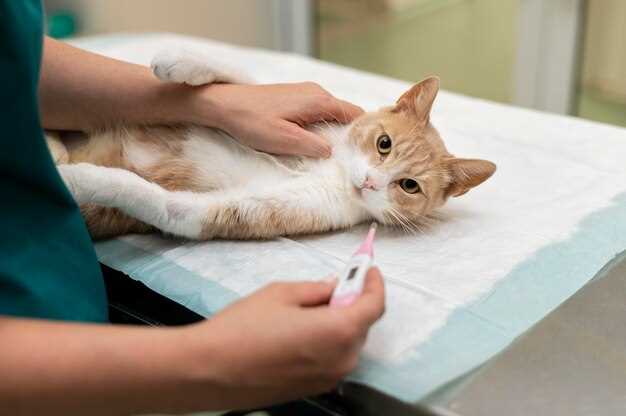
Are you scheduled for a CAT scan and taking Metformin?
It is important to follow the guidelines regarding the use of Metformin before your CAT scan.
Ensure your healthcare provider is aware of your medication and adjust your dosage accordingly to avoid any complications during the procedure.
Importance of Cat Scan

The Cat Scan, also known as a CT Scan (Computed Tomography), is a valuable medical imaging tool that allows doctors to see detailed cross-sectional images of the body. It plays a crucial role in diagnosing various conditions, including tumors, infections, fractures, and internal injuries. By providing clear and precise images, Cat Scans help healthcare professionals make accurate diagnoses and develop effective treatment plans.
Importance of Cat Scan
A Computerized Axial Tomography (CAT) scan, also known as a CT scan, is a crucial diagnostic tool used by healthcare professionals to obtain detailed images of the inside of the body. By combining multiple X-ray images taken from different angles, a CAT scan can create cross-sectional images of organs, bones, and tissues.
The importance of a CAT scan lies in its ability to detect abnormalities and diagnose various medical conditions, including tumors, infections, fractures, and internal injuries. It allows doctors to visualize the internal structures of the body with precision, enabling them to make accurate diagnoses and develop effective treatment plans.
Furthermore, CAT scans are non-invasive and relatively quick, making them a valuable tool in emergency situations or when rapid diagnosis is essential. They are also useful for monitoring the progress of certain treatments and assessing the effectiveness of interventions.
Overall, the information obtained from a CAT scan plays a vital role in healthcare by assisting healthcare providers in making informed decisions about patient care and improving outcomes.
Role of Cat Scans in Diagnosis
CT scans, also known as cat scans, play a crucial role in diagnosing various medical conditions. They use specialized X-ray equipment to produce detailed images of the inside of the body, allowing healthcare providers to identify abnormalities and make accurate diagnoses.
Benefits of CT Scans
CT scans are commonly used to diagnose a wide range of conditions, including tumors, fractures, infections, and internal injuries. They provide valuable information about the size, shape, and location of abnormalities within the body, helping healthcare providers develop appropriate treatment plans.
Accuracy and Speed: CT scans are highly accurate and can quickly produce detailed images, allowing healthcare providers to make timely diagnoses and provide prompt treatment.
Non-invasive: Unlike some diagnostic procedures, CT scans are non-invasive and do not require surgery or incisions. This makes them a safe and convenient option for patients.
Metformin Administration Guidelines

1. Dosage: Take Metformin exactly as prescribed by your doctor. Do not change the dosage without consulting your healthcare provider.
2. Timing: Take Metformin with meals to reduce the risk of stomach upset. Stick to a regular schedule and try to take it at the same time each day.
3. Swallow Whole: Do not crush, chew, or break the Metformin tablets. Swallow them whole with a full glass of water.
4. Stay Hydrated: Drink plenty of water while taking Metformin to prevent dehydration and kidney problems.
5. Monitor Blood Sugar: Keep track of your blood sugar levels regularly as directed by your healthcare provider.
6. Watch for Side Effects: Be aware of potential side effects like stomach upset, diarrhea, or lactic acidosis. Contact your doctor if you experience any concerning symptoms.
7. Storage: Store Metformin at room temperature away from moisture and heat. Keep it out of reach of children and pets.
Precautions Before Cat Scan
Before undergoing a Cat Scan (CT scan) while on Metformin, it’s crucial to take certain precautions to ensure your safety and health. Metformin can interact with the contrast dye used in CT scans, potentially causing serious side effects. Here are some important precautions to follow:
1. Consult Your Healthcare Provider
Before the CT scan, inform your healthcare provider about your Metformin use. They may advise you to temporarily stop taking Metformin before the scan to reduce the risk of complications.
2. Stay Hydrated
Drink plenty of water before and after the CT scan to help flush out the contrast dye from your system and reduce the risk of kidney damage.
By taking these precautions, you can safely undergo a CT scan while on Metformin without compromising your health.
Precautions Before Cat Scan
Before undergoing a CT scan, it is important to follow certain precautions to ensure the procedure goes smoothly and to minimize any potential risks. Here are some key precautions to keep in mind:
- Inform your doctor if you are pregnant or suspect you might be pregnant, as CT scans involve radiation which can be harmful to the unborn child.
- Let your healthcare provider know if you have any allergies, especially to contrast dye, iodine, or shellfish.
- Provide a complete medical history, including any past surgeries, health conditions, or medications you are currently taking.
- Follow any instructions regarding fasting or specific dietary restrictions before the CT scan, as directed by your healthcare provider.
- Remove any metal objects or jewelry from your body before the procedure, as they can interfere with the imaging process.
- Wear comfortable clothing and avoid wearing clothes with metal snaps or zippers, as they may need to be removed for the scan.
- Arrive at the imaging center on time and be prepared to follow any additional instructions provided by the healthcare team.
By following these precautions before a CT scan, you can help ensure a successful and safe imaging procedure.
Steps to Take Before Cat Scan
Before undergoing a CAT scan, there are several essential steps to follow to ensure the procedure goes smoothly and provide accurate results:
- Consult with your healthcare provider to discuss the necessity of the CAT scan and any specific instructions.
- Inform your healthcare provider about any allergies, medical conditions, or medications you are taking, especially metformin.
- Follow the fasting instructions provided by your healthcare provider, typically requiring no food or drink for a few hours before the scan.
- Remove any metal objects, jewelry, or clothing with metal components that could interfere with the scan.
- Wear loose, comfortable clothing without metal fastenings to ensure ease of movement during the procedure.
- Arrive at the imaging center on time to complete any necessary paperwork and preparations.
- Be prepared to lie still on the scanning table during the procedure to minimize blurriness in the images.
- Follow any additional instructions provided by the radiology technologist conducting the scan for optimal results.
By following these steps before your CAT scan, you can help ensure a successful imaging procedure and accurate diagnosis.
Risks and Side Effects
Metformin can cause certain side effects that may vary in severity. Common side effects include nausea, vomiting, diarrhea, and stomach upset. These symptoms are often mild and tend to improve over time as your body adjusts to the medication.
More serious side effects of metformin can include lactic acidosis, a rare but potentially life-threatening condition. Symptoms of lactic acidosis may include muscle pain, weakness, difficulty breathing, and stomach discomfort. It is important to seek medical attention immediately if you experience any of these symptoms while taking metformin.
Some people may also experience allergic reactions to metformin, characterized by rash, itching, swelling, or difficulty breathing. If you develop any signs of an allergic reaction, stop taking metformin and contact your healthcare provider right away.
It is essential to follow your healthcare provider’s instructions carefully when taking metformin to minimize the risk of side effects and complications. Be sure to inform your doctor of any existing medical conditions or medications you are taking to ensure metformin is safe for you to use.
